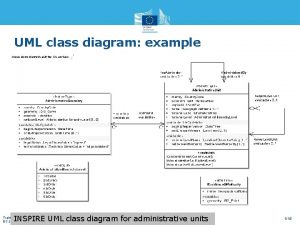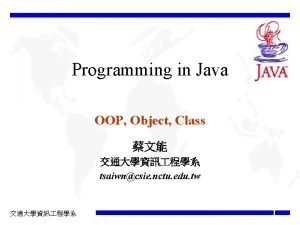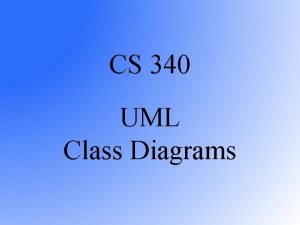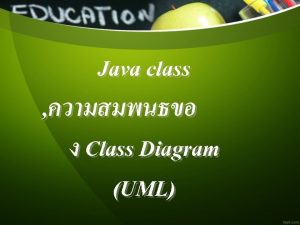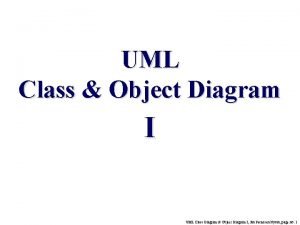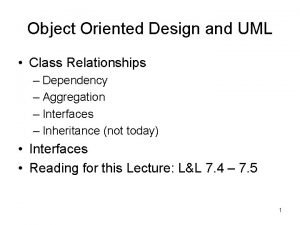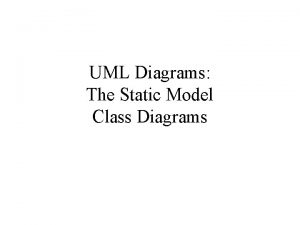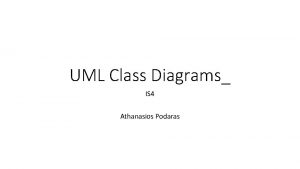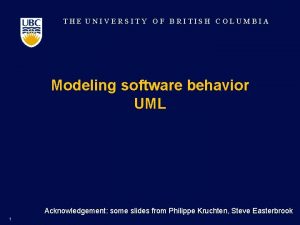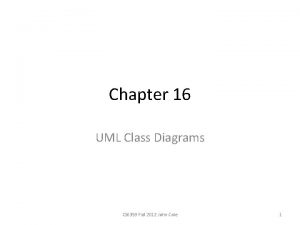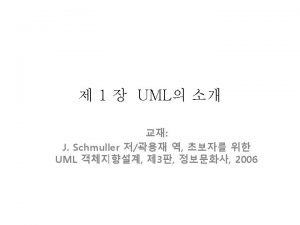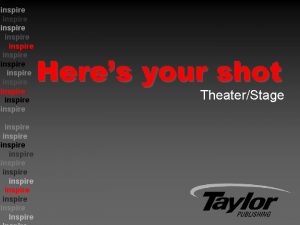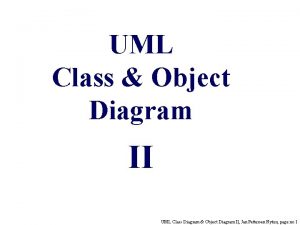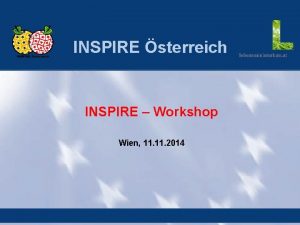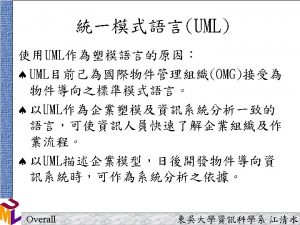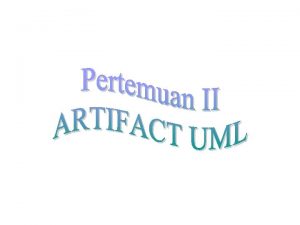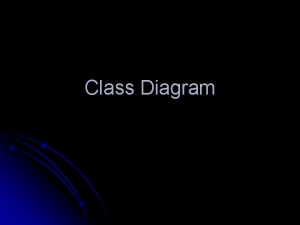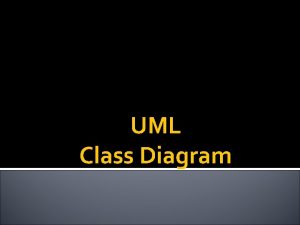UML class diagram example INSPIRE UML class diagram















- Slides: 15

UML class diagram: example INSPIRE UML class diagram for administrative units Training: INSPIRE Basics EC JRC 1/15

UML (Unified Modeling Language) Training: INSPIRE Basics EC JRC 2/15

Class • Definition: description of a set of objects that share the same attributes, operations, relationships, and semantics. • Objects are also called «instances» of the class Training: INSPIRE Basics EC JRC 3/15

Class visibility class name (convention: Upper. Camel. Case) Car + seat. Number : Integer + colour : Colour [1. . *] attribute name (convention: lower. Camel. Case) attribute type multiplicity – [min. . max] (default: exactly 1) « A car is characterised by a seat number and one or several colors. » Training: INSPIRE Basics EC JRC 4/15

Inheritage / generalisation • Definition: taxonomic relationship between a more general element and a more specific element. • Representation: Class. A Class. B « A Class. B instance is also a Class. A instance » « Class. B instances share the same characteristics as Class A instances » « Class. B specialises Class. A » « Class. A is more abstract / generalised than Class. B » . . . Training: INSPIRE Basics EC JRC 5/15

Inheritage / generalisation Vehicle owner. Name : String construction. Date : Date Car Boat draft : Float abstract classes (shown in italics) cannot have instances Bus passenger. Nb : Integer « Cars, boats, and buses are vehicles » « All vehicles have a construction date » « A bus is a vehicle with a passenger number value » … Training: INSPIRE Basics EC JRC 6/15

Association • Definition: relationship between classes that specifies connections between their instances Class. A role. A a. . b Assotiation. Name role. B c. . d Class. B • Example: Company Training: INSPIRE Basics EC JRC employer 1. . * Employment employee 0. . * Person 7/15

Multiplicity • Examples: Company employed employer Employment 0. . * Person « Companies and persons are linked with an employment relation » « A person can be employed by zero, one or several companies » « A company can employ zero, one or several persons » parent Kinship 2 Individual 0. . * child Training: INSPIRE Basics EC JRC « There is a kinship relation between individuals » « All individuals have exactly 2 parents » « Each individual can have no, one or several children » 8/15

Aggregation • Definition: Aggregation relationship between instances of a class and several instances of another class Aggregate. Class a. . b c. . d Aggregated. Class « A Class. A instance is an aggregate of instances of class. B » • Example: Country Region * 1 « A country is an aggregation of regions » Training: INSPIRE Basics EC JRC 9/15

Composition • Definition: Composition relationship between instances of a class and several instances of another classe (they cannot exist independently Composite. Class Componant. Class 1 * « A class. A instance is a a composite of instances of class. B » • Example: Book 1 2. . * Page « A book is composed of pages (at least two) » Training: INSPIRE Basics EC JRC 10/15

Navigability • Definition: Indication, whether instances of one class can see or know about instances of another class to which they are related through an association Company supplier 0. . 2 user * Person « A Person instance knows the Company instances it is associated with » « A Company instance does not know the Person instances it is associated with » Training: INSPIRE Basics EC JRC 11/15

Note • Definition: Comment or a constraint attached to a diagram element. • Usually linked to the element it is related to (with dashed line) • In natural language Class. A Comment on class. A Training: INSPIRE Basics EC JRC 12/15

Constraint • Definition: condition or restriction to satisfy. • Can be represented in {…} or in a note • In natural language, or OCL (when possible) Class. A objects should be like this Training: INSPIRE Basics EC JRC {Class. A objects should be like that} 13/15

Stereotype • Definition: Stereotypes extend the semantics, but not the structure of pre-existing UML elements (classes, attributes, operations, associations, roles, packages) • UML representation: << stereotype. Name >> Class. Name << stereotype. Name >> + attribute. Name : Data. Type Training: INSPIRE Basics EC JRC 14/15

Exercise: What is represented here? INSPIRE UML class diagram for administrative units Training: INSPIRE Basics EC JRC 15/15
 Inspire uml
Inspire uml C++ class implementation
C++ class implementation Class diagram uml example
Class diagram uml example Java uml example
Java uml example Uml class diagram example
Uml class diagram example Uml diagram
Uml diagram Static class diagram
Static class diagram Object diagram java
Object diagram java How to draw domain model diagram
How to draw domain model diagram Class diagram dependency
Class diagram dependency Uml fundamentals
Uml fundamentals Uml static
Uml static Class uml diagram
Class uml diagram Sequence diagram netflix
Sequence diagram netflix Class uml diagram
Class uml diagram Uml wikipedia class diagram
Uml wikipedia class diagram
